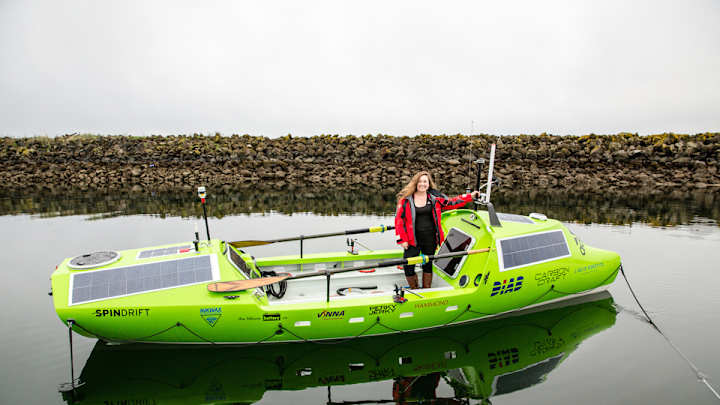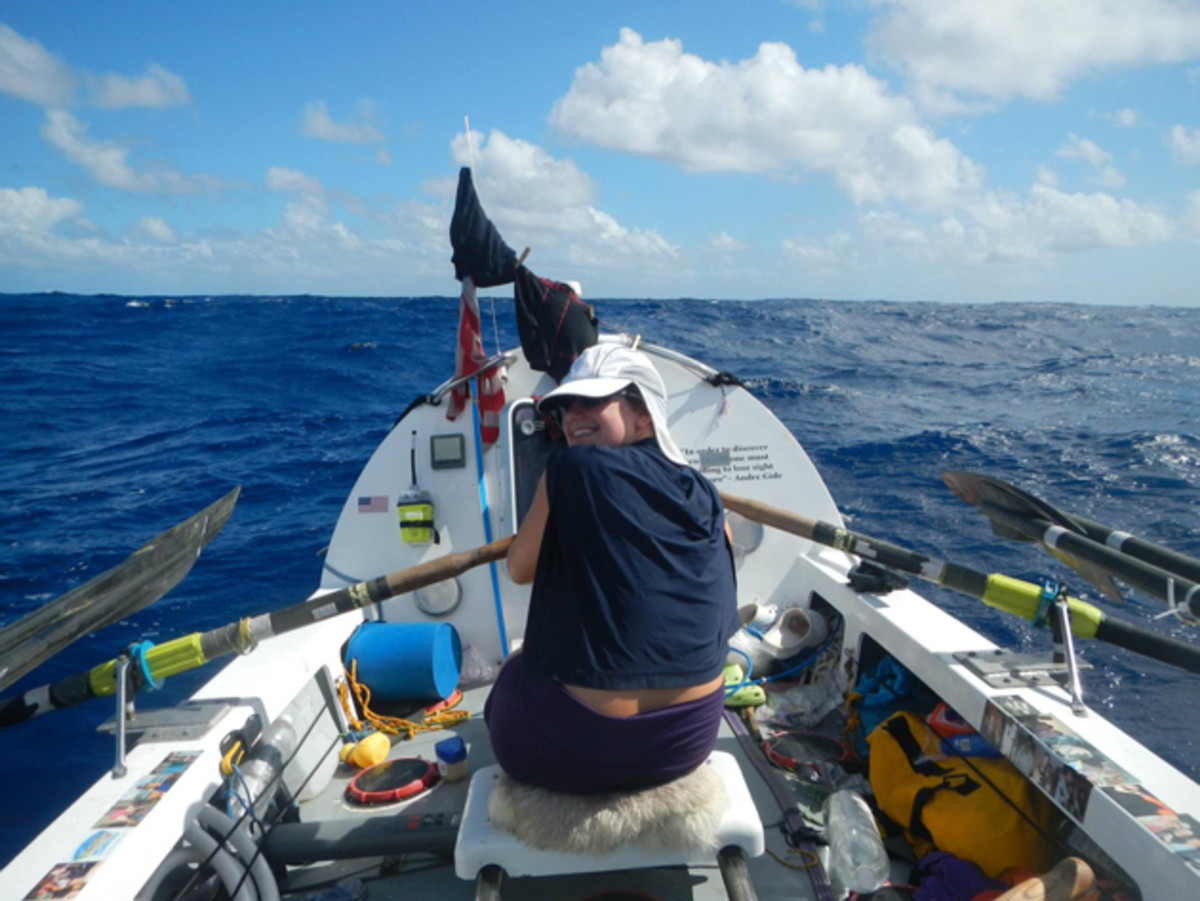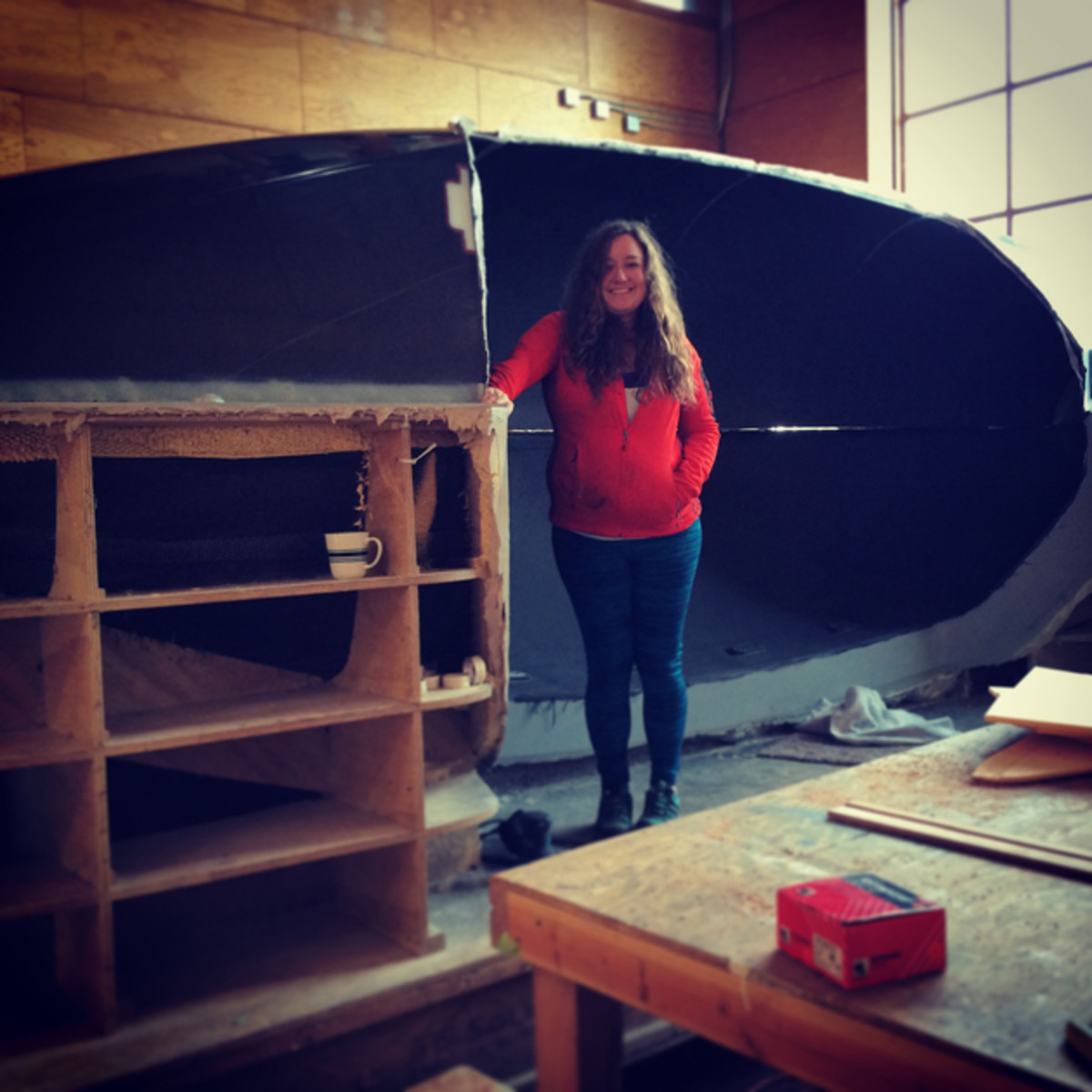Rowing Wild: Sonya Baumstein's epic solo voyage across the Pacific Ocean

Sonya Baumstein is as hopelessly optimistic as you’d need to be to even consider rowing solo across the Pacific Ocean. In the next few days, Baumstein is due to paddle out of Choshi Marina on the east coast of Japan, and start a 5,000-mile journey across the world’s largest expanse of water to San Francisco.
“I know that everything’s going to go wrong, but I don’t think about that ahead of time,” Baumstein says. “I have really low expectations on a daily basis, which keeps me happy.”
Only a handful of people have ever successfully made that crossing before, the last two being a pair of Brits, in 2009. Only one woman, Sarah Outen, has even attempted it, once in 2012 and again in 2013. Baumstein expects the journey might take her four to six months. She has food for 180 days.
By recording salinity data along the way, Baumstein hopes to help calibrate and validate oceanographic research tools. She also plans to use her journey as a way to educate students about the oceans, and to engage them in conservation work. But the main reason she’s doing this, why she’s put three years of her life into this expedition, is simple: “Can I do this?” (Well, that and because she’s trying to get the attention of Bill Murray, star of her favorite film, The Life Aquatic with Steve Zissou.)
Since Baumstein arrived in Japan at the end of last month she’s been busy with final preparation and waiting for her boat, Icha, to clear customs. Now she’s waiting a few days longer for Typhoon Dolphin, a Category 5 super typhoon, to clear out of her way. When that storm blows through and the weather calms, she’ll be ready. “I personally am the most mentally prepared I could be,” Baumstein says,“ because there were a million chances to quit and I haven’t taken one of them.”
***
Tech Talk: The science behind designing SUP boards and paddles
In 2003, Baumstein was recruited out of Winter Park High School in Florida to join the University of Wisconsin’s lightweight crew. On her very first day she missed the cut; she was one pound over weight. The Badgers switched her to the heavyweight team, but at 5'4" she was judged too short to row, despite having some of the best splits on the indoor rowing machines. So she sat in the coxswain’s seat instead, biding her time in case an opening came up.
In spring of her freshman year she got her chance. Thrown into stroke seat of one of the lower varsity eights, her crew beat the top boat. She began training hard again, ready to come back and row her sophomore season.
But that summer, at home in Florida, Baumstein was hit by a car while crossing the road. The impact broke more than 10 different bones and she was airlifted to hospital, barely alive. Her injuries were bad enough that no one even told her that her right shoulder blade was broken—a fractured scapula wasn’t an immediate priority. Baumstein only found out when she got home from the hospital and wondered why using her right arm hurt so much.
Back at Wisconsin that fall, Baumstein started training again. But when she ran, her right knee felt like it was going to break backwards. She tried to push through the pain, telling herself: Don’t be a baby, you’ve had all these major injuries, shit’s gonna hurt sometimes.
When the pain didn’t fade away or improve, she went back to see a doctor. Her right ACL and meniscus were torn, most likely as a result of the car accident. That year she struggled through three more operations, and her college rowing career was over. “The most important part of my life was ended prematurely, before I really could do anything with it,” Baumstein says.

In 2007 she graduated with a degree in East Asian studies, and then returned home to Winter Park to study for a master’s degree in non-profit management and emergency disaster planning at the University of Central Florida. Rowing was never entirely out of her mind, though. Baumstein started coaching at her old high school and at the nearby Orlando Rowing Club’s masters program. And the struggle of balancing 4 a.m.wake-ups with a 40-hour-a-week job and school paid off. In 2010, the high school girls she coached came second at the Scholastic Nationals and the women’s masters eight won gold at the world championships in Canada.
Then Steven Freygang, who, like Baumstein, was an assistant coach at Winter Park, asked if she’d ever tried ocean rowing, and dared her to row across the Atlantic. She took the bait, and, in December 2011, set out with three other rowers from Barbados in a boat paid for by the money she’d received from the car accident. They reached the Canary Islands 57 days later.
What did Baumstein learn from that experience? “You don’t think too far ahead,” she says. “You plan for the best possible thing to happen, and then you react to the things that change, your realities everyday.”
She also caught the adventure bug. Three months later she biked from the Mexican border to Seattle. Then she kayaked from Seattle across open ocean to Juneau, Alaska. And in summer 2013, she crossed the Bering Strait, between Alaska and Russia, on a stand up paddle board.
***
Training with Alex Honnold: How the free-climbing rock star gets his grip
When she began working on this latest expedition three years ago, Baumstein wanted to row across in a woman’s pair. No woman had ever made the journey before, and she wanted to challenge any stereotypes that these sorts of adventures were for men only. But her chosen partner turned out to be a bad fit.
They’d only ever met on Skype, and the other woman walked away just as their boat was about to be built. Baumstein lost half of her sponsors, including the one that was willing to pay for the pair’s $150,000 boat. She had to hit the campaign trail again, raise more funds, design and pay for a new boat, and the expedition got delayed a year from last summer until now.
She also had to learn how to build a boat. The first carbon fiber hull that came out of the mold was a $20,000 failure, and the build stalled when two previous project managers dropped out. So Baumstein took over. There are only a handful of companies in the world that build ocean rowing boats; Baumstein’s SpinDrift Ocean Rowing, founded in the middle of this project, is the newest.
Before April, Baumstein was conditioning her body by lifting weights and stretching, but the rush to complete her boat on time meant zero training in the final month. She’s not daunted by the lost gym time, though, because there really isn’t any exercise you can do on land that matches the challenge out on the water. “You can’t row an ocean until you row an ocean,” Baumstein says. “The Atlantic was hell, so that’s good prep.”
Rowing in high school and college—flat water rowing—was all about catching perfectly every time, backing the blade into the water, driving with the legs, then gliding patiently back up the slide for the next stroke, in perfect harmony. Instead, in ocean rowing, “you are attempting to fight nature,” she says. “It’s constantly fighting against nature to get a stroke.” In choppy water, with big waves rocking the boat, just getting a half decent catch every ten strokes is success.

“Really nothing prepares you for it,” Baumstein says. “It’s not just your muscles; it’s your full body experience. It’s the nausea, the exhaustion.”
Her 23-foot carbon fiber boat is designed to self-right if—or when—the waves get big enough to tip it over. Baumstein is also carrying two extra sets of oars, and there is a small cabin she can shelter in to escape the elements. She has GPS and navigation equipment to help her keep on track, and two drag devices, a drogue and a para-anchor, that can be used to either slow the boat down in case of high tail winds, or latch onto eastward moving ocean currents and catch a ride.
A small desalination plant will produce all of her fresh water, and all the electrical equipment onboard will be powered by solar panels. Baumstein is insistent that this might not be the easiest was to get to San Francisco, but it will be the greenest.
Perhaps the most important piece of equipment, though, is the food. “There’s few things that you have control over when you’re in a boat like this by yourself,” Baumstein says, “and one of these things is the food that you’re consuming. If the food doesn’t make you happy, everything else is miserable. And you being miserable, that mental state, affects your ability to survive.” She needs 5,000 calories a day just to keep going, and even then expects to lose 40 pounds. Her diet will consist of Backpacker’s Pantry freeze-dried meals, Vitargo drinkable starch, and beef jerky. She also has Cheez-Its and Fruit Loops to boost her spirits.
Before leaving port, Baumstein had to file an emergency plan with the Coast Guard detailing how she might deal with anything that goes wrong. She built her boat, so she knows how to fix it. She’s a qualified EMT, so she knows how to fix herself, too. She can run IVs, and says she has a high pain tolerance—she even has a staple gun to fix any really deep cuts.
She doesn’t have a chase boat, partly due to cost, and partly because being trailed by a diesel guzzling support vessel felt like it conflicted with her zero-carbon voyage. But she won’t be entirely alone. She’ll be in 24-hour contact with her team back on shore, including medical advisor Andrew Cull and duty officer Simon Chalk, who is probably the most experienced ocean rower there is. Her boat is called Icha after the Okinawan saying ichariba choodee—when we meet, we become family—because, according to Baumstein, none of this would have been possible without the support she has had from all of those people.
Now the hard part, the loneliest part, begins. She might not see another soul until, in about five months time, she rows under the Golden Gate Bridge and into the San Francisco Bay. Or at least that’s the plan. Baumstein is realistic as well as optimistic. “Anywhere I can land on the west coast, I’m landing,” she says.
